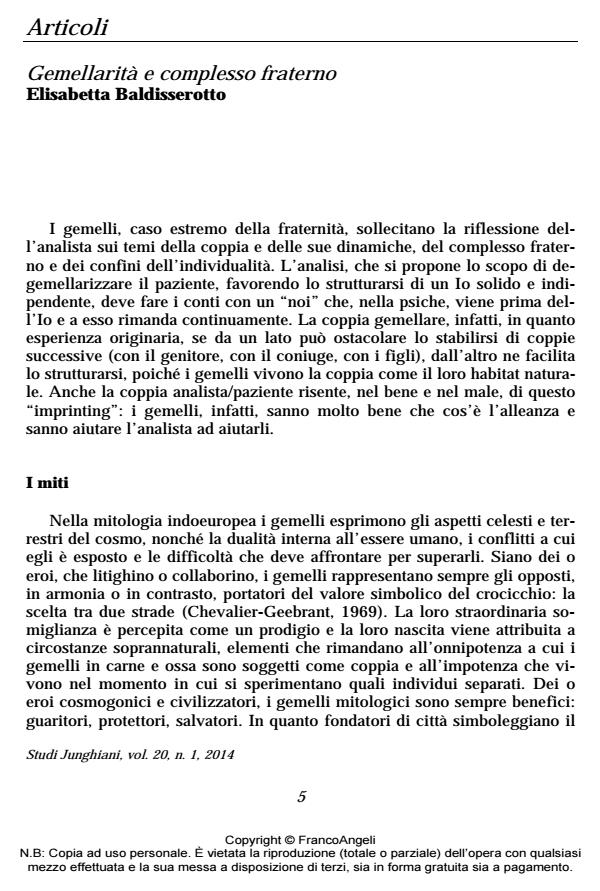Twins and sibling complex
Journal title STUDI JUNGHIANI
Author/s Elisabetta Baldisserotto
Publishing Year 2014 Issue 2014/39
Language Italian Pages 15 P. 5-19 File size 60 KB
DOI 10.3280/JUN2014-039001
DOI is like a bar code for intellectual property: to have more infomation
click here
Below, you can see the article first page
If you want to buy this article in PDF format, you can do it, following the instructions to buy download credits

FrancoAngeli is member of Publishers International Linking Association, Inc (PILA), a not-for-profit association which run the CrossRef service enabling links to and from online scholarly content.
This article is a contribution to the ongoing debate on the psychology of twins, in particular it deals with the problem of their separation. In the first part, the author introduces some Indo- European myths in order to outline the archetypal background of twin psychology. Afterward, she analyses the most significant studies of identical twins, which show how the sibling complex is more emphasized than the mother and the father complex in the twin psyche. Hence, the analytical treatment has to take the former into account during the whole process. Eventually, the article ends with some reflections on the separation process inspired by a clinical case.
Keywords: Twins, sibling complex, separation, couple effect, to give way
Elisabetta Baldisserotto, Gemellarità e complesso fraterno in "STUDI JUNGHIANI" 39/2014, pp 5-19, DOI: 10.3280/JUN2014-039001